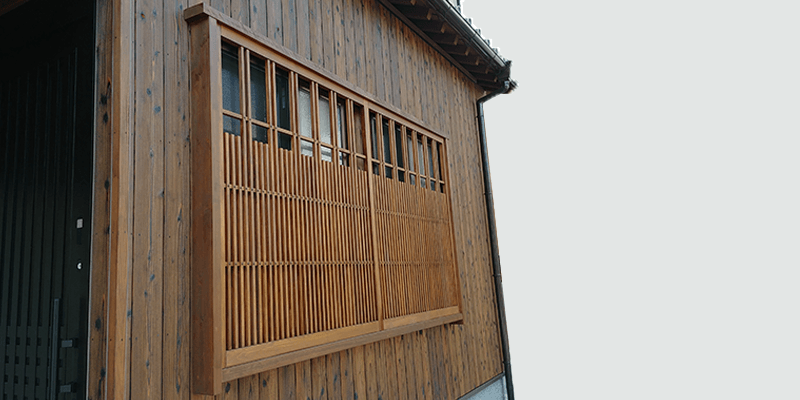Downloads
DOI:
https://doi.org/10.7480/jfde.2020.2.4100Keywords:
cooling energy, simulation, shading, louvers, Japanese koshiAbstract
As the European building stock is in evident need of deep energy retrofitting to meet current European decarbonisation targets, the construction market calls for industrialised systems to boost massive renovations and activate economies of scale. The article outlines the development of an offsite fabricated system for building energy refurbishment through rainscreen façade elements. A focus is placed on such elements as they offer excellent system integration possibilities and the opportunity to boost the level of offsite fabrication, compared to other already industrialised façade systems, such as unitised façades. This research was carried out within the framework of BuildHEAT research project, funded by the European Union Horizon 2020 framework programme. The system concept is based on a systemic approach that combines energy efficiency, multifunctionality, integration of renewable energies, and ease of installation as design drivers. System development has rolled out through different phases, with an increased level of detail. During the schematic design phase, a set of different prefabricated façade panel dimensions were analysed. Afterwards, the component and system integration were assessed according to their impacts in terms of energy performance and fulfilment of mandatory technical requirements. As a last step, the most promising technical combinations underwent detailed design to verify construction feasibility and eliminate any bottlenecks during the fabrication phase. Results show that the proposed prefabricated solutions allowed: (i) simplified active system integration (photovoltaics, solar thermal, and building services), (ii) ease of installation on site, minimising the impact of renovation actions on occupants without compromising on final quality and reducing installation costs. Current limitations to extensive market diffusion of the system are related to two main aspects: (i) the need for on-site adjustments; and (ii) increased manufacturing costs compared to traditional external insulation interventions (e.g. ETICS). The current cost of the system (2020) is in the range of 3 - 1.5x the cost of, respectively, an ETICS or a vented rainscreen façade. However, as a next step, including the life-cycle perspective in the calculation, as well as accounting for economies of scale, the system will be evaluated, expecting a cost figure comparable to the rainscreen façade.
How to Cite
Published
Issue
Section
License
Copyright (c) 2020 Alexander Rani Suryandono, Agus Hariyadi, Hiroatsu Fukuda

This work is licensed under a Creative Commons Attribution 4.0 International License.
Authors or their institutions retain copyright to their publications without restrictions.
References
Cho, J., Yoo, C., & Kim, Y. (2014). Viability of exterior shading devices for high-rise residential buildings: Case study for cooling energy saving and economic feasibility analysis. Energy and Buildings, 82, 771–785. https://doi.org/10.1016/j. enbuild.2014.07.092
EnergyPlus (n.d.). Climate, Sky, and Solar Shading Calculations. Retrieved October 11, 2019 from https://www.energyplus.net/ sites/default/files/docs/site_v8.3.0/EngineeringReference/05-Climate/index.html EnergyPlus Documentation. (n.d.). Tips and Tricks Using
EnergyPlus. Retrieved October 11, 2019 from https://energyplus.net/ sites/default/files/pdfs_v8.3.0/Tips_and_Tricks_Using_EnergyPlus.pdf
El-Darwish, I., & Gomaa, M. (2017). Retrofitting strategy for building envelopes to achieve energy efficiency. Alexandria Engineering Journal, 56(4), 579–589. https://doi.org/10.1016/j.aej.2017.05.011
Food for Rhino (n.d.). Ladybug tools for Rhinoceros 3d. Retrieved October 11, 2019 from https://www.food4rhino.com/app/ ladybug-tools
Ghosh, A., & Neogi, S. (2018). Effect of fenestration geometrical factors on building energy consumption and performance evaluation of a new external solar shading device in warm and humid climatic condition. Solar Energy, 169, 94–104. https:// doi.org/10.1016/j.solener.2018.04.025
Hariyadi, A., Fukuda, H., & Ma, Q. (2017). The effectiveness of the parametric design ‘Sudare’ blind as external shading for energy efficiency and visibility quality in Jakarta. Architectural Engineering and Design Management, 13(5), 384–403. https://doi.org/1 0.1080/17452007.2017.1296811
Hernández, F. F., Cejudo López, J. M., Peña Suárez, J. M., González Muriano, M. C., & Rueda, S. C. (2017). Effects of louvers shading devices on visual comfort and energy demand of an office building. A case of study. Energy Procedia, 140, 207–216. https://doi. org/10.1016/j.egypro.2017.11.136
Huang, Y., Niu, J., & Chung, T. (2012). Energy and carbon emission payback analysis for energy-efficient retrofitting in buildings— Overhang shading option. Energy and Buildings, 44, 94–103. https://doi.org/10.1016/j.enbuild.2011.10.027
JDIH Kementrian ESDM. (2017). Peraturan Menteri ESDM 57 tahun 2017. Retrieved November 21, 2019, from https://jdih.esdm. go.id/index.php/web/result/1725/detail
Perusahaan Listrik Negara. (2020). Tariff Adjustment. Retrieved February 6, 2020, from https://www.pln.co.id/statics/ uploads/2020/01/Januari-Maret-2020.jpg
Ralegaonkar, R. V., & Gupta, R. (2010). Review of intelligent building construction: A passive solar architecture approach. Renewable and Sustainable Energy Reviews, 14(8), 2238–2242. https://doi.org/10.1016/j.rser.2010.04.016
Samaan, M. M., Farag, O., & Khalil, M. (2018). Using simulation tools for optimizing cooling loads and daylighting levels in Egyptian campus buildings. HBRC Journal, 14(1), 79–92. https://doi.org/10.1016/j.hbrcj.2016.01.001
Skejic, D., Boko, I., & Neno, T. (2015). Aluminum as a material for modern structures. Gradevinar, 67(11), 1075–1085. https://doi. org/10.14256/JCE.1395.2015
Stacey, M., & Bayliss, C. (2015). Aluminium and durability: Reviewed by inspection and testing. Materials Today: Proceedings, 2(10), 5088–5095. https://doi.org/10.1016/j.matpr.2015.10.100
The International Energy Agency. (n.d.). Statistics. Retrieved November 21, 2019, from https://www.iea.org/statistics/
The International Energy Agency. (2017a). Energy Efficiency 2017: Laporan Khusus Efisiensi Energi di Indonesia. Retrieved November 21, 2019 from https://www.iea.org/publications/freepublications/publication/EnergyEfficicency2017IndonesiaFocusBahasaIndonesia.pdf
The International Energy Agency. (2017b). Southeast Asia Energy Outlook 2017. https://doi.org/10.1787/9789264285576-en
The International Energy Agency. (2017c). Space Cooling Energy Insight Brief. Retrieved from https://www.iea.org/publications/ freepublications/publication/SpaceCoolingEnergyEfficiencyInsightsBrief.pdf
The International Energy Agency. (2018). Energy Efficiency 2018: Analysis and Outlooks to 2040. Retrieved from https://doi. org/10.1787/9789264024304-en
The International Energy Agency. (2019). Southeast Asia Energy Outlook 2019. Retrieved from https://webstore.iea.org/download/ direct/2887?fileName=Southeast_Asia_Energy_Outlook_2019.pdf
The Onebuilding. (n.d.). Jakarta Indonesia TMY3. Retrieved October 3, 2019, from http://climate.onebuilding.org/WMO_Region_5_ Southwest_Pacific/IDN_Indonesia/JW_Jawa/IDN_JW_Jakarta.Obs.967450_TMYx.zip
The World Bank (n.d.). Urban population (% of total population) Indonesia | data. Retrieved February 6, 2020, from https://data. worldbank.org/indicator/SP.URB.TOTL.IN.ZS?locations=ID&view=chart
The World Bank (2019, December 11). Overview [Text/HTML]. Retrieved February 6, 2020, from World Bank website: https://www.worldbank.org/en/country/indonesia/overview
The Wondermetals. (2019, July 30.). The many benefits of aluminum louvers. Retrieved February 6, 2020, from http://wondermetals.com/benefits-of-aluminum-louvers/
Tsushi-nikai. (n.d.). Retrieved November 21, 2019, from http://www.hachise.com/kyomachiya/features/exteriorKoshi.html
